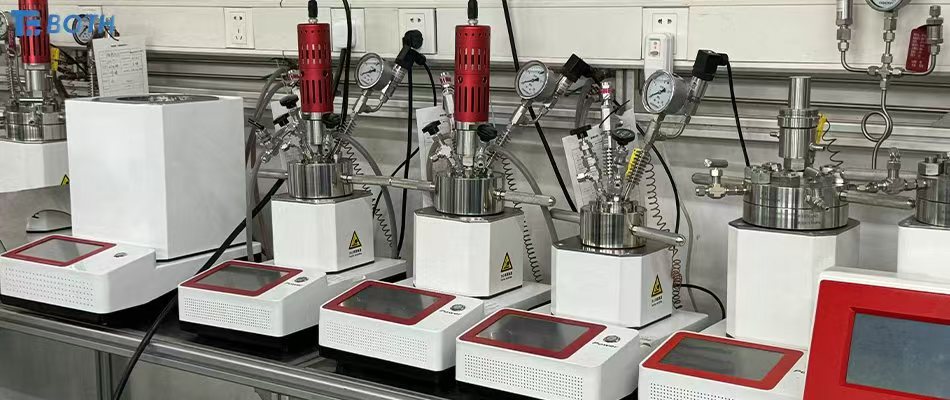With the continuous advancement of technology, the ultrasonic high-temperature high-pressure reactor has demonstrated outstanding performance and a broad range of applications in fields such as chemistry, materials science, and biotechnology.
This high-temperature high-pressure reactor is an experimental device designed to facilitate reactions under high-pressure and high-temperature conditions. Its core principle is based on the mechanical vibrations of ultrasound, which induce compression and expansion processes in the surrounding medium, thereby creating a high-temperature and high-pressure environment. This device features efficient and uniform heat and mass transfer capabilities, which can accelerate reaction rates, improve yields, and optimize product selectivity.
The ultrasonic high-temperature high-pressure reactor offers several notable advantages. First, it effectively eliminates mass transfer resistance at liquid interfaces, promoting the diffusion and dissolution of reactants in the liquid phase, thereby increasing reaction rates and product purity. Second, the high-frequency vibrations of ultrasound can induce cavitation in the liquid, forming bubbles that then collapse instantaneously. This process generates localized high temperatures and pressures, along with intense turbulent shear forces, all of which accelerate the reaction. Additionally, the high-temperature high-pressure reactor is known for its excellent controllability, ease of operation, and safety.
In the field of chemistry, the high-temperature high-pressure reactor is widely used in organic synthesis, catalytic reactions, and material preparation. Through the effects of ultrasound, reaction rates can be accelerated, product yields can be improved, and synthesis targets that are difficult to achieve with traditional methods can be realized. In materials science, the reactor is used in the preparation of nanomaterials, process control, and material characterization. The special high-temperature and high-pressure conditions effectively regulate the morphology, structure, and properties of materials.
In biotechnology, the high-temperature high-pressure reactor also plays a crucial role. It is applied in biological analysis and preparation processes such as cell disruption, protein folding studies, and DNA/RNA extraction. The mechanical action of ultrasound efficiently breaks down cell walls, accelerates protein folding, and enhances nucleic acid extraction efficiency.
As an advanced experimental tool, the ultrasonic high temperature high pressure reactor exhibits exceptional performance and vast application potential. It plays an important role in fields such as chemistry, materials science, and biotechnology, providing strong support for scientific innovation and breakthroughs in green synthesis. With ongoing technological advancements, the high-temperature high-pressure reactor is expected to demonstrate even more promising applications in the future.
Contact our engineering team for tailored solutions to enhance your lab’s research capabilities.
Post time: May-16-2025







